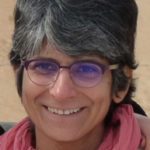Link to Pubmed [PMID] – 9891781
Annu. Rev. Cell Dev. Biol. 1998;14:137-66
Many pathogens actively exploit the actin cytoskeleton during infection. This exploitation may take place during entry into mammalian cells after engagement of a receptor and/or as series of signaling events culminating in the engulfment of the microorganism. Although actin rearrangements are a common feature of most internalization events (e.g. entry of Listeria, Salmonella, Shigella, Yersinia, Neisseria, and Bartonella), bacterial and other cellular factors involved in entry are specific to each bacterium. Another step during which pathogens harness the actin cytoskeleton takes place in the cytosol, within which some bacteria (Listeria, Shigella, Rickettsia) or viruses (vaccinia virus) are able to move. Movement is coupled to a polarized actin polymerization process, with the formation of characteristic actin tails. Increasing attention has focused on this phenomenon due to its striking similarity to cellular events occurring at the leading edge of locomoting cells. Thus pathogens are convenient systems in which to study actin cytoskeleton rearrangements in response to stimuli at the plasma membrane or inside cells.



